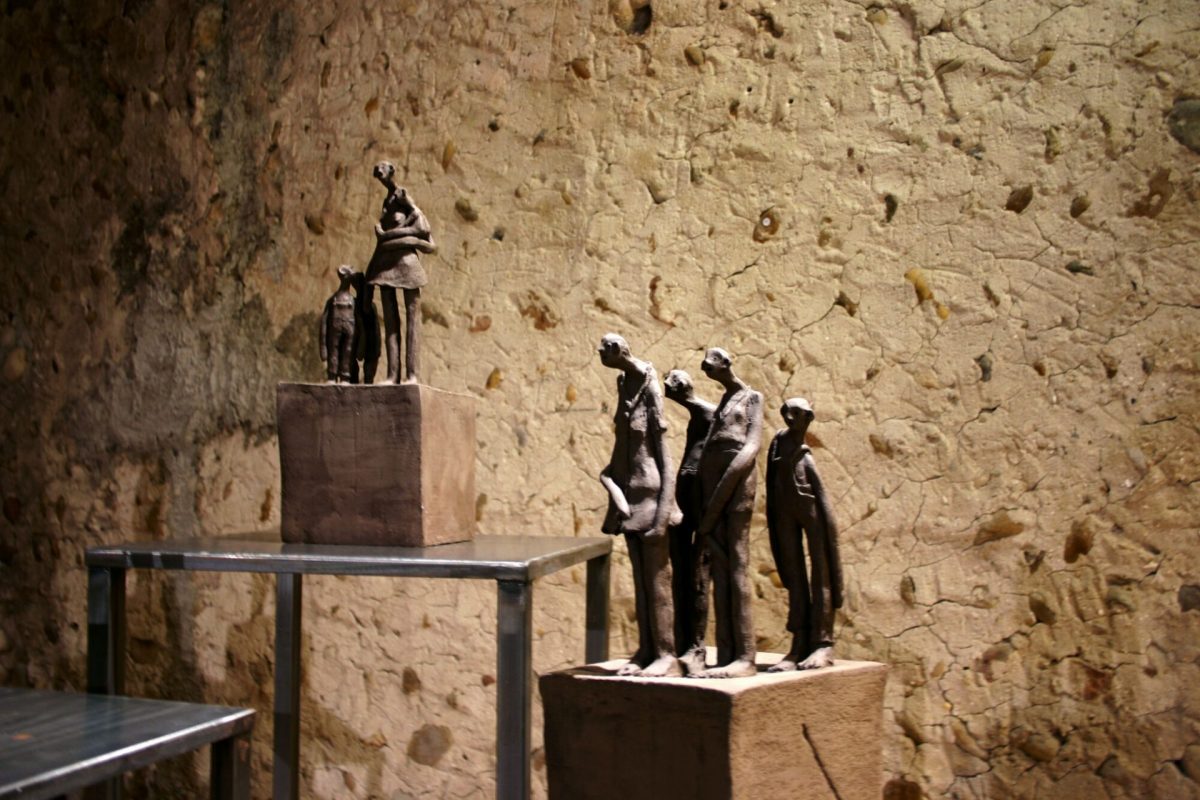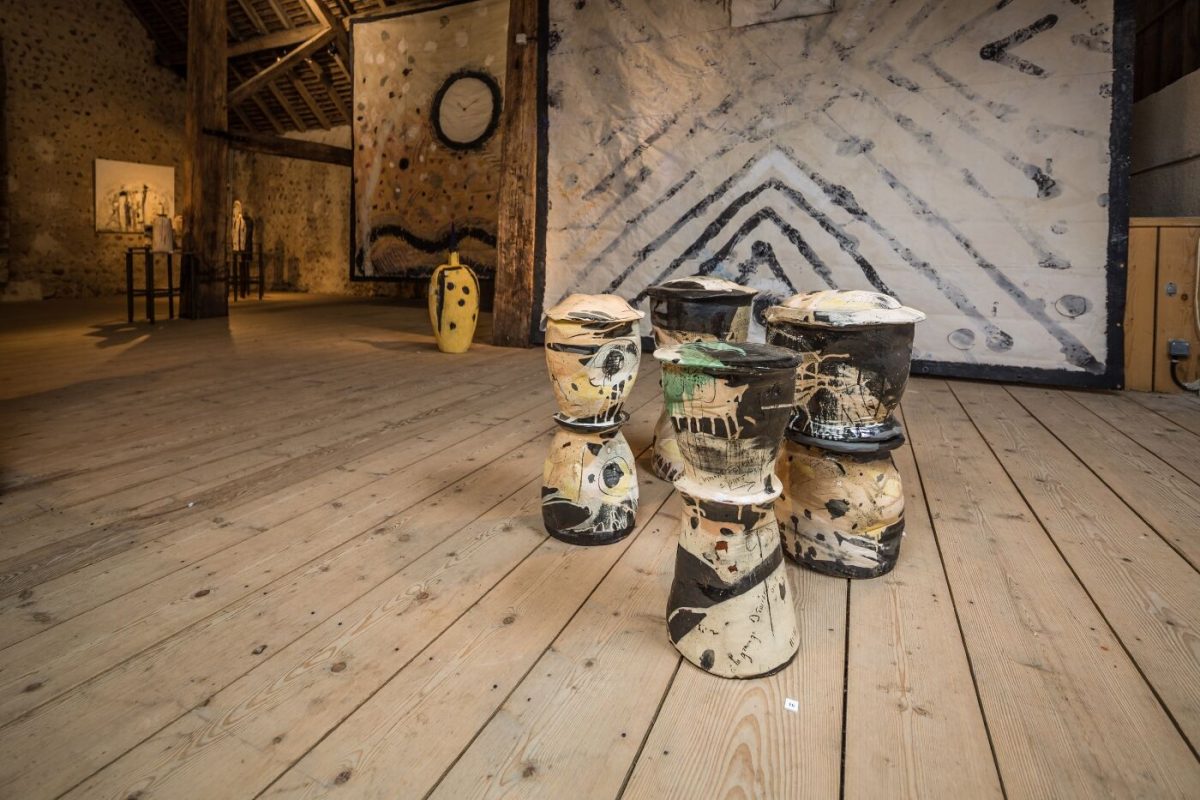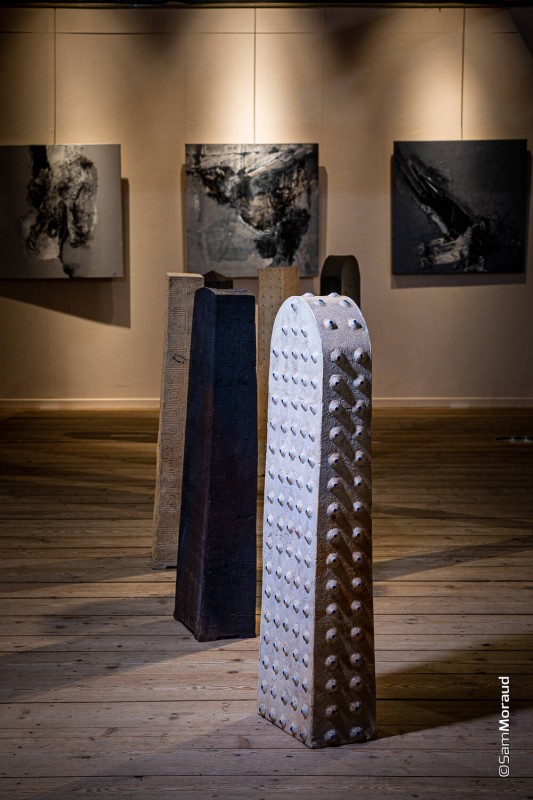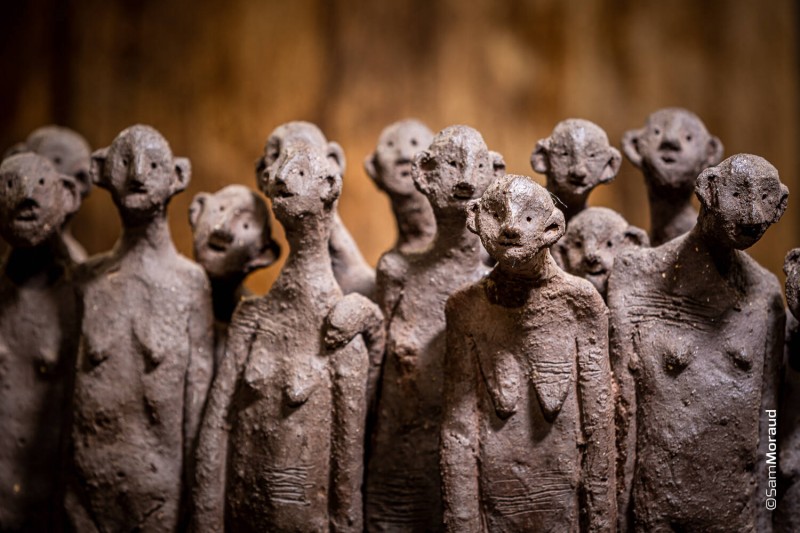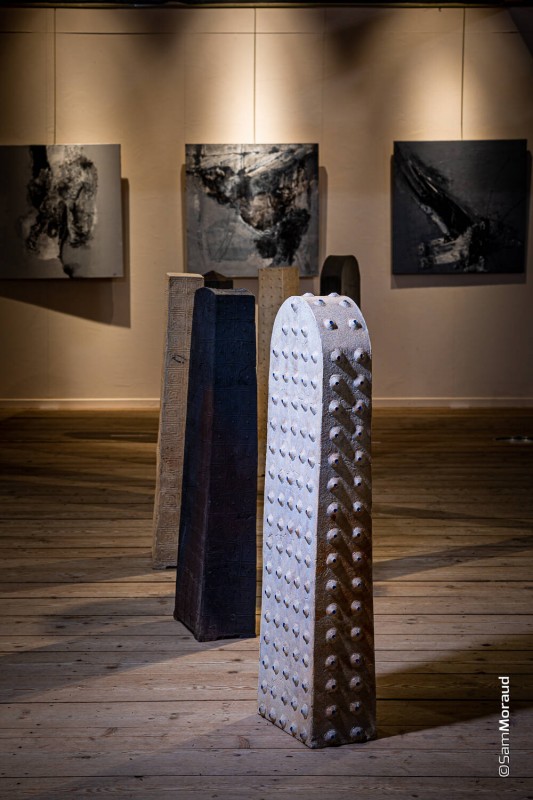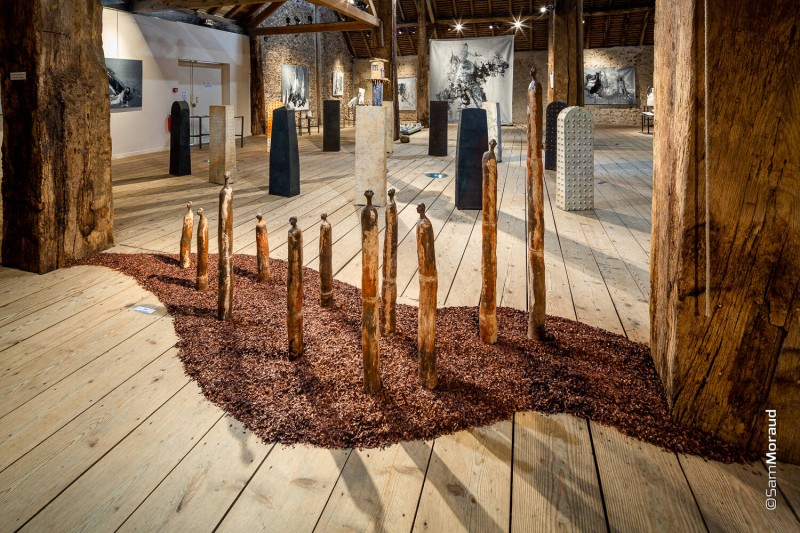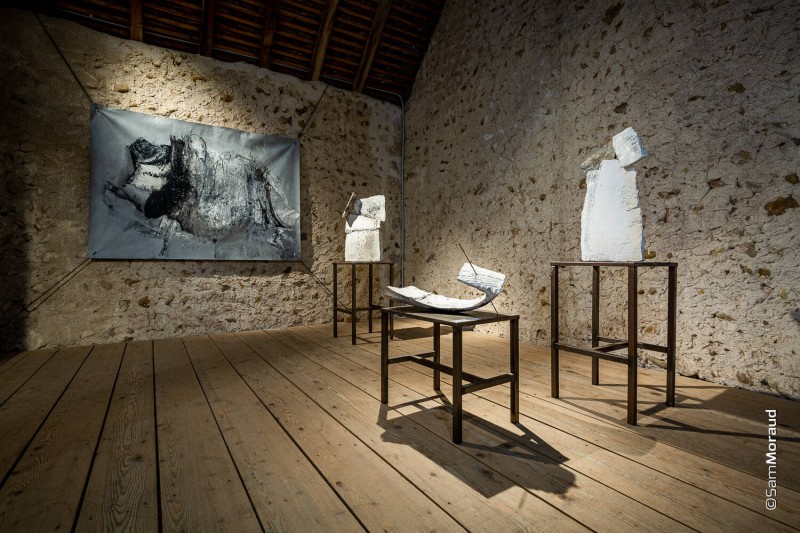In 2020, the Grange Dîmière has once again offered you a beautiful program around the Parenthèse exhibition bringing together 4 artists: the painter Maurice Jayet and the ceramists Marjo Van Der Lee, Brigitte Long and Christian Faillat.
A great opportunity to rediscover their works and the evolution of their work.
Maurice Jayet
Painter, he exhibited at the Grange Dîmière in 1999 alongside the sculptor Raymond Jaquier. His paintings, all in black and white, suggest shapes and movements, without showing human intervention.
“Entering this artistic territory in black and white does not require a visa, does not require a pass. No need for codes or rules to penetrate this abstract universe, of an immediately perceptible expression. […] I do not show reality in what it has perfectible or dreamlike, I try to assign it to a residence without landmarks, free of tangible presences and recognizable elements. And then, and then, there is the gaze! This way of approaching the work, stripped of all suspicion, without a priori and strong in this capacity to recover an innocence, an availability. […] ”- Maurice Jayet
marjo van der lee
Ceramic artist, she exhibited at the Grange Dîmière in 2014.
Marjo van der Lee's chamotte sandstone sculptures show us beings where the singularities of the characters are highlighted. It is this balance between beauty and "beautiful" disgrace that is sought to give substance to emotions. Inspired by everyday encounters, Marjo van der Lee creates earthen characters. "His figurative sculpture features characters with simplified shapes, dangling arms, naked faces with a bewildered air, fragile in a strange and hostile world, fighting against isolation and confinement". She is inspired by our differences to highlight them. Each of his sculptures reminds us of a simple story, that of simple people, but gives us “raw emotions like scratching the bark”.
Brigitte Long
Ceramic artist, she exhibited at the Grange Dîmière in 2016.
Sensitive to the history of the building, place of storage of the tithe, the artist invited us to gather under the ridge of the barn around an installation mixing metal, earth, porcelain and plants, a set of balanced pieces, balances between transparency and opacity, mobility and lightness as well as raku pieces.
“The old walls of the Barn, so peaceful today, keep within them the traces of a hard and harsh life, witnesses of another time. A time when the Barn vibrates, sheltering crops and animals. A time when the peasant struggles and has to pay his due to the monks. A time when the earth is genesis, where each acre of land is work. Fertile earth, clayey earth, link between matter and space. It is this living place, this space for meetings and exchanges that drives my work on the land. "- Brigitte Long, 2016
2020: “journeys through uncertain lands”… raku and porcelain.
Christian Faillat
Ceramic artist, he exhibited at the Grange Dîmière in 2017.
This year, Christian Faillat is showcasing its terminals, “material and symbolic milestones”. Visible and palpable signs of human presence, they limit spaces and shape the landscape ...
“A small milestone on the side of a road, the terminal marks a milestone. Its stillness reveals the movement of the one who crosses it. At the edge of a lot, it marks the border between the interior and the exterior. Contrary to the tree or the stone arriving there unexpectedly and being able to serve as reference mark, the terminal is an indication of the human presence. It was made and deposited intentionally to measure distances, to share land, to signify a limit. By depositing its urine to mark its territory, the animal relies on the olfactory faculties of its congeners to warn them of its presence. The human being behaves in the same way but using visible and palpable signs; he thus draws his landscape. The terminals that I propose are material and symbolic milestones. They can follow each other in a linear fashion to connect two points by proposing a route, they then indicate a beginning and an end. They can also form a circle, like a vestige of a place dedicated to some sacred practice. For this exhibition, I will arrange them in an ellipse, like two parentheses that close. "- Christian Faillat







